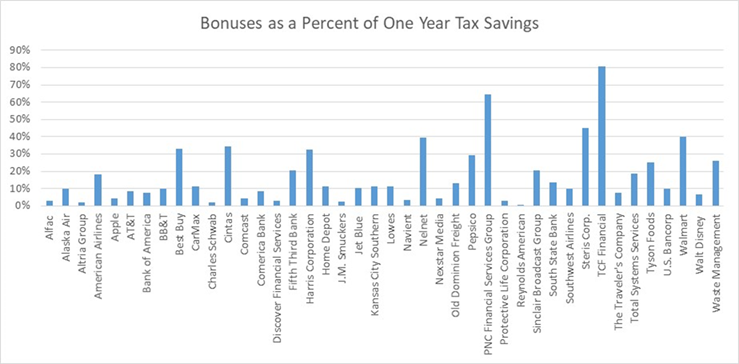March 17, 2018
Many large companies managed to get some good publicity by announcing bonuses for their workers which they said were the fruits of the tax cuts. We, of course, have no way of knowing the extent to which these bonuses were due to the tax cut or were simply a story of companies trying to retain workers in a tighter labor market.
In that context, it would have been better to see pay increases, which presumably will be in place in subsequent years and provide a higher basis for future pay raises. Of course, some companies did announce that they were raising workers pay also, in addition to some who improved retirement and other benefits.
All of that is good, but it does still miss the point of the Republican tax cut story. Their claims of workers getting $4,000 to $9,000 more in annual income did not depend on companies sharing their tax cuts. Rather it is a story that depends on a tidal wave of new investment increasing productivity. Higher productivity five or ten years out is supposed to mean higher wages.
The early returns on the investment-productivity story are not good, but we still can’t say anything conclusive on the investment boom story. But we can join in the game to see what share of company tax cuts are being shared with workers through the much-hyped bonuses.
I did a quick calculation where I used the income and taxes reported in companies’ 2016 annual report and compared it to what they would be paying at the new 21 percent tax rate, to calculate companies’ tax savings. This likely understates the tax savings since many companies will undoubtedly find ways to pay less than the 21 percent statutory rate. Also, presumably their profits and therefore savings will be higher in 2018 than in 2016. It is also important to remember that their tax savings will be an annual deal, recurring for the indefinite future, whereas the workers’ bonuses are a one-time event.
The figure below gives the picture.

Source: Author’s calculations.
The bonus figures are taken from The Americans for Tax Reform “list of tax reform good news.” I did make some assumptions to get the ratios. For example, in the case of Walmart, they reported giving a maximum bonus of $1,000 which went to a full-time worker who had been with the company for 20 years. I assumed that the average bonus for its 1.6 million workers would be half of this amount. I generally tried to be generous in these assumptions.
Addendum:
I forget to mention that the Republicans effectively paid companies to announce bonuses before the end of last year. A bonus announced in 2017 could be deducted against 2017 profits, even though it may not be paid until 2018. This makes a big difference since companies faced a 35 percent tax rate in 2017, compared with a 21 percent tax rate in 2018.
This means, for example, that the $800 million in bonuses that Walmart is promising only cost the company only cost the company $520 million (65 percent of $800 million) because they announced it in 2017. If they had waited until 2018 the bonuses would have cost them $632 million (79 percent of $800 million). In effect, Walmart was paid $112 million to announce its bonuses before the end of 2017. This is the same story for any company considering bonuses for its workers.







Comments